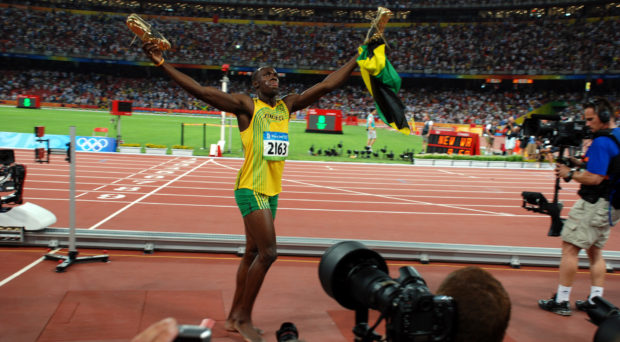
This post can also be read on the SpingerOpen blog.
A long time ago, I was a serious athlete. I was quite good, coming third at the World under-18 Championships, and winning the European under-20 Championships, both over 100m. And yet, as an adult, I never made a World Championship or Olympic Games individual final. If you compare my times to those that made the final of the London 2012 Olympics Games, at 18 years of age, I was the fastest. And yet, in the years following those promising youth performances, I showed very little improvements, whilst those athletes progressed to being truly world class sprinters.
We propose that, alongside traditional Talent Identification methods, perhaps we should attempt to identify those athletes with the greatest capacity to improve with training.
This illustrates a common problem with most Talent Identification (TI) programmes; they tend to use results, either from a physical test or competition performance, at a given age as a method to predict future success as an adult. However, as my results show, this is both inaccurate and inefficient, potentially leading to the mis-identification of athletes. Instead, we need a better way, and this is the subject of a paper published today in Sports Medicine – Open by myself and my co-author, John Kiely. Here, we propose that, alongside traditional TI methods, perhaps we should attempt to identify those athletes with the greatest capacity to improve with training. In this case, instead of identifying youngsters who are currently already very good at their sport, we can uncover those with the greatest margin for improvement.
In order to frame our argument, we discuss whether the ability to adapt to exercise (or, in this case, training) can be considered a talent. To do this, we utilise a framework first proposed by Howe and colleagues, which states that for something to be considered a talent, it must fulfil five criteria:
- It must be partially innate
- The full effects of this talent must not be fully evident at an early age
- There must be early indications of this talent
- Only a minority of people must possess this talent
- The talent must be domain specific
A key point in this argument is that, when subject to a training programme, there is a wide variety in the training improvements seen in individuals. Some of this variation is down to statistical error and noise, as covered excellently by Atkinson and Batterham, but some is also due to biological variation. An important component of this biological variation are small changes in our DNA, which can have a fairly large impact on the size of the improvements we see from training. As there is an undoubted genetic component to this variation, then the ability to see large improvements from training is at least partially innate. Having established that the ability to respond to training is at least partially innate, we also show evidence that it meets the other four criteria, and, as such, we can consider it to be a talent. The next step is to determine if we can test for it, because, if we can, then we have the opportunity to improve the TI process.
Over the last twenty or so years, rapid improvements in technology have made genetic testing both affordable and widely available. As differences in our genes explain some of the variation in the individual response to training, then a genetic test may help us identify those athletes that possess such genes which enable the greatest improvements from training. This approach is currently controversial, and as of yet very few genes have been determined to alter the adaptations from training. However, early research in this area is promising, but there are still a number of scientific and ethical hurdles to be overcome.
Nevertheless, there is the potential that, in the future, the use of genetic testing may aid in the identification of individuals with the greatest capacity to improve with exercise. Such information should enhance the current talent identification process, which at present identifies those athletes who are currently successful, as opposed to those who will be successful in the future.
Comments